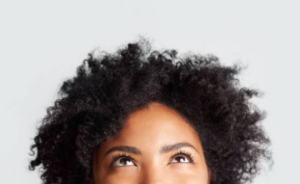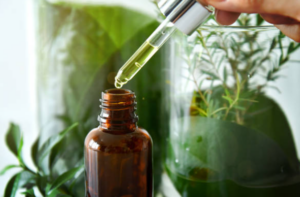The Power of Plant-Based

In recent years, there has been a significant shift towards clean beauty, with consumers becoming increasingly conscious of the ingredients in their haircare products. This movement towards cleaner, more natural formulations has led to a rise in plant-based hair treatments that harness the power of botanicals to nourish, strengthen, and revitalize the hair. From moisturizing masks to rejuvenating oils, these clean hair treatments offer a natural alternative to conventional products, providing a gentle yet effective way to care for your locks. In this guide, we’ll explore the power of plant-based hair treatments and how they can transform your haircare routine.
The Benefits of Plant-Based Ingredients
Plant-based ingredients offer a wealth of benefits for the hair, thanks to their rich nutrient content and gentle yet effective properties. Unlike synthetic chemicals and harsh additives found in many conventional hair treatments, plant-based ingredients are gentle on the hair and scalp, making them suitable for all hair types, including sensitive and color-treated hair.
Many plant-based ingredients are packed with vitamins, minerals, and antioxidants that nourish and strengthen the hair, promoting healthy growth and vitality. Additionally, botanical extracts and essential oils often have soothing and moisturizing properties, helping to hydrate the hair and scalp and alleviate dryness and irritation.
Popular Plant-Based Ingredients
There is a wide variety of plant-based ingredients used in clean hair treatments, each offering its own unique benefits for the hair. Here are some popular plant-based ingredients to look for in your hair treatments:
- Coconut Oil: Rich in fatty acids, coconut oil helps to moisturize and condition the hair, leaving it soft, smooth, and shiny.
- Argan Oil: Known as “liquid gold” for the hair, argan oil is rich in antioxidants and vitamins that help to nourish and repair damaged hair.
- Shea Butter: Extracted from the nuts of the shea tree, shea butter is deeply moisturizing and helps to improve the elasticity of the hair, reducing breakage and split ends.
- Aloe Vera: Soothing and hydrating, aloe vera helps to calm inflammation and irritation on the scalp while promoting healthy hair growth.
- Jojoba Oil: Similar in composition to the natural oils produced by the scalp, jojoba oil helps to balance oil production and moisturize the hair without leaving it greasy.
- Rosemary Extract: Stimulates hair growth and improves circulation to the scalp, promoting healthy hair growth and reducing hair loss.
- Peppermint Oil: Invigorates the scalp and promotes circulation, leaving the hair feeling refreshed and revitalized.
Types of Plant-Based Hair Treatments
Plant-based hair treatments come in various forms, each designed to address specific hair concerns and deliver targeted benefits. Here are some popular types of plant-based hair treatments:
- Hair Masks: Deep conditioning masks infused with plant-based oils and botanical extracts to nourish and moisturize the hair, leaving it soft, smooth, and manageable.
- Hair Oils: Lightweight oils that can be used as leave-in treatments or overnight treatments to hydrate and repair the hair, reduce frizz, and add shine.
- Scalp Treatments: Serums and treatments formulated with botanicals like tea tree oil, lavender, and rosemary to soothe and balance the scalp, alleviate dryness and irritation, and promote healthy hair growth.
- Hair Serums: Lightweight serums infused with plant-based ingredients to protect the hair from heat damage, reduce frizz, and add shine and smoothness.
- Hair Sprays: Styling sprays enriched with botanical extracts and essential oils to hold styles in place while nourishing and protecting the hair from environmental damage.

Incorporating Plant-Based Hair Treatments into Your Routine
Adding plant-based hair treatments to your routine is easy and can make a significant difference in the health and appearance of your hair. Here are some tips for incorporating plant-based hair treatments into your routine:
- Choose the Right Treatment: Consider your hair type, concerns, and goals when selecting a plant-based hair treatment. Whether you’re looking to hydrate dry locks, repair damage, or soothe an irritated scalp, there’s a plant-based treatment for you.
- Follow Directions: Follow the instructions on the product packaging for best results. Some treatments may need to be applied to damp hair, while others can be used on dry hair or as overnight treatments.
- Be Consistent: Incorporate plant-based hair treatments into your routine regularly for optimal results. Consistency is key to seeing improvements in the health and appearance of your hair over time.
- Experiment: Don’t be afraid to experiment with different plant-based treatments to find the ones that work best for your hair. What works for one person may not necessarily work for another, so it may take some trial and error to find your perfect match.
- Consider Your Overall Haircare Routine: Plant-based hair treatments are just one part of a holistic haircare routine. In addition to using clean hair treatments, be sure to use a gentle, sulfate-free shampoo and conditioner, avoid excessive heat styling, and eat a balanced diet rich in vitamins and minerals for healthy hair from the inside out.
Plant-based hair treatments offer a natural and effective way to care for your hair, providing nourishment, hydration, and protection without the use of harsh chemicals or synthetic additives. Whether you’re looking to repair damage, hydrate dry locks, or soothe an irritated scalp, there’s a plant-based treatment for you. By incorporating plant-based hair treatments into your routine, you can achieve healthy, vibrant hair that radiates beauty and vitality, all while supporting your commitment to clean beauty and sustainability.

